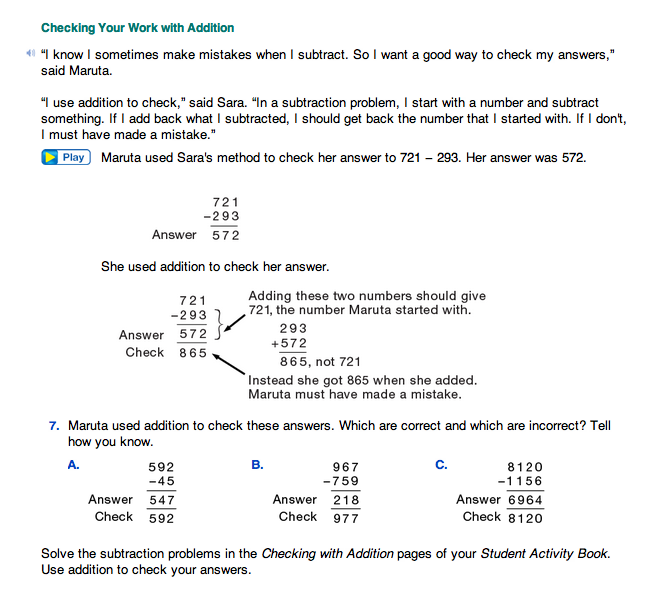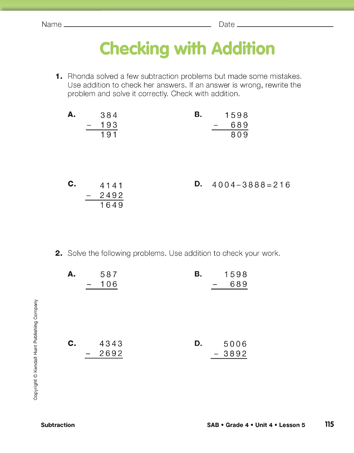Subtraction
Est. Class Sessions: 2–3Developing the Lesson
Part 4. Checking with Addition
It is very important for students to develop the habit of checking their work. The nice thing about subtraction is that we can check it with addition. Sometimes when we look back over calculations, we make the same mistake we did the first time. But by checking subtraction with a different operation—addition—we can sometimes pick up errors we would otherwise not catch.
Begin by writing a subtraction problem with an incorrect answer on the board as in Figure 14.
Ask:
Ask students to read the Checking Your Work with Addition section of the Student Guide. Then ask them to check the problems in Question 7 and determine which are correct and which are incorrect. (The second problem is incorrect.)
Ask students to solve the problems on the Checking with Addition page in the Student Activity Book. In Question 1, students use addition to check someone else's work. In Question 2, they subtract and then use addition to check their own work.
After students are comfortable with checking, they might prefer to not write down the sum when they check. They can check in their heads. For example, after solving the problem in Figure 15, they can add the two bottom numbers in their heads to see if they get back the number at the top that they started with.
As they check in their heads, they can think:
- 9 + 7 = 16, so the 6 in the ones place is correct. Add 1 ten to the tens column: 1 + 4 + 3 = 8, so the tens column is also correct.
Assign the Checking with Addition Homework section in the Student Activity Book for homework. (Minis are in the Homework and Practice section.)
















